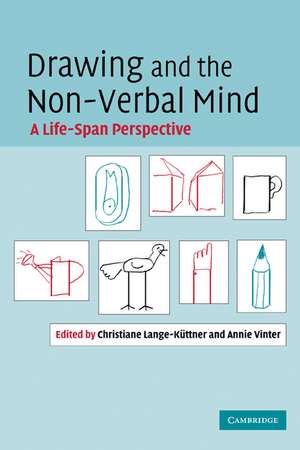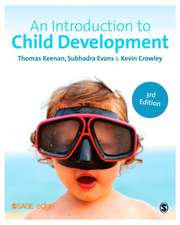Drawing and the Non-Verbal Mind: A Life-Span Perspective
Editat de Chris Lange-Küttner, Annie Vinteren Limba Engleză Paperback – dec 2010
| Toate formatele și edițiile | Preț | Express |
|---|---|---|
| Paperback (1) | 353.65 lei 43-57 zile | |
| Cambridge University Press – dec 2010 | 353.65 lei 43-57 zile | |
| Hardback (1) | 784.48 lei 43-57 zile | |
| Cambridge University Press – 13 aug 2008 | 784.48 lei 43-57 zile |
Preț: 353.65 lei
Nou
Puncte Express: 530
Preț estimativ în valută:
67.69€ • 73.55$ • 56.90£
67.69€ • 73.55$ • 56.90£
Carte tipărită la comandă
Livrare economică 21 aprilie-05 mai
Preluare comenzi: 021 569.72.76
Specificații
ISBN-13: 9780521182881
ISBN-10: 0521182883
Pagini: 360
Dimensiuni: 152 x 229 x 20 mm
Greutate: 0.53 kg
Editura: Cambridge University Press
Colecția Cambridge University Press
Locul publicării:Cambridge, United Kingdom
ISBN-10: 0521182883
Pagini: 360
Dimensiuni: 152 x 229 x 20 mm
Greutate: 0.53 kg
Editura: Cambridge University Press
Colecția Cambridge University Press
Locul publicării:Cambridge, United Kingdom
Cuprins
1. Contemporary enquiries into a long-standing domain: drawing research Chris Lange-Küttner and Annie Vinter; Part I. Self, Symbols and Intention: 2. Understanding reflections of self and other objects Kim Bard; 3. Drawing production, drawing re-experience and drawing re-cognition Josephine Ross; 4. Style and other factors affecting children's recognition of their own drawings Robin N. Campbell, Pauline A. Duncan, Anita L. Harrison and Lynne C. Mathewson; 5. Children's understanding of the dual nature of pictures Richard Jolley; 6. Pictorial intention, action and interpretation Norman H. Freeman and Esther Adi-Japha; Part II. Syntax, Space Systems and Projection: 7. The interaction of biomechanical and cognitive constraints in the production of children's drawing Gregory Braswell and Karl Rosengren; 8. Graphic syntax and representational development Annie Vinter, Delphine Picard and Viviane Fernandes; 9. Spatial structures in children's drawings: how do they develop? Sergio Morra; 10. Figures in and out of context: absent, simple, complex and halved spatial fields Chris Lange-Küttner; 11. Spatial and symbolic codes in the development of three-dimensional graphic representation Maria A. Tallandini and Luisa Morassi; 12. On contours seen and contours drawn Jan B. Deręgowski; Part III. Aging, Blindness and Autism: 13. Benefits of graphic design expertise in old age: compensatory effects of a graphical lexicon? Ulman Lindenberger, Yvonne Brehmer, Reinhold Kliegl and Paul B. Baltes; 14. Drawing as a 'window' on deteriorating conceptual knowledge in neurodegenerative disease Karalyn Patterson and Sharon W. Erzinçlioğlu; 15. Drawings by a blind adult: orthogonals, parallels and convergence in two directions without T-junctions John M. Kennedy and Igor Juricevic; 16. Differences between individuals with and without autism in copying tasks: how knowledge interferes when drawing perspective Elizabeth Sheppard, Peter Mitchell and Danielle Ropar.
Descriere
Fascinating insight into the life-span and productivity of the non-verbal, visual mind.














